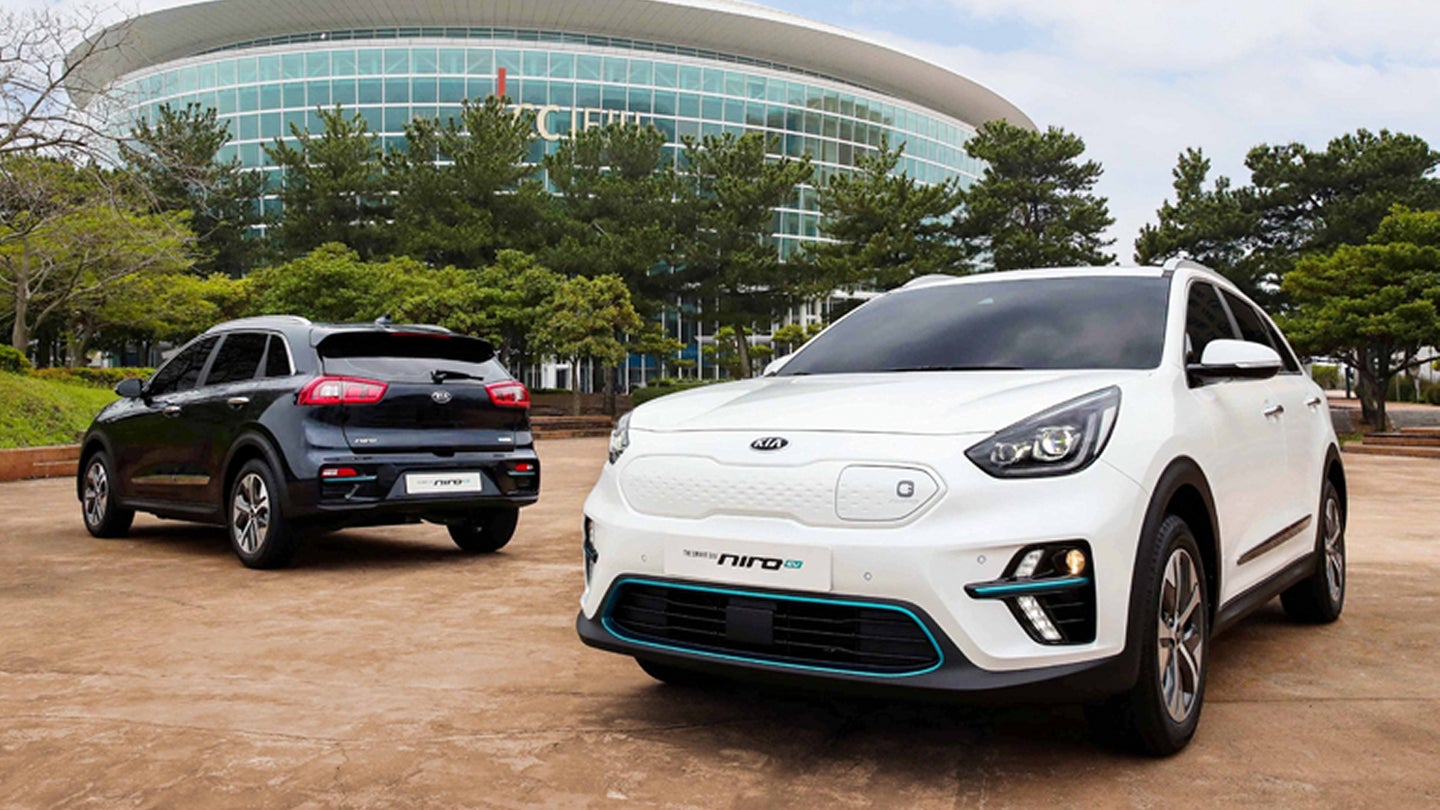Hyundai, Kia Reduce Electric Range Estimates of Kona and Niro EVs
Hyundai and Kia detected anomalies with the way their electric crossovers were tested and issued updated, more conservative range figures.

Intertwined Korean automakers Hyundai and Kia issued updated range estimates for their respective Kona and Niro electric crossovers on Tuesday, showing a decline from formerly posted numbers.
They state that they identified problems with the testing methodologies of the independent firms contracted to determine the estimated ranges of the models according to modern WLTP standards. Hyundai and Kia allege the tests comprised disproportionately of urban testing, where electric vehicles are more efficient, giving an unrealistically high range estimate.
Hyundai thus curtailed the WLTP range estimate of its Kona EV to 180 miles with the 39.2-kilowatt-hour (kWH0 battery, and 279 miles with the 64-kWh battery. Kia reduced the 64-kWh battery Niro EV's range estimate from 301 miles to 283.
WLTP testing methodology is a modern standard used as a replacement for NEDC testing, which gave more liberal range and efficiency estimates. The United States uses EPA testing standards, which are more conservative still with regard to estimated EV ranges, likely due to a higher proportion of American driving being on highways, where EVs expend more energy than in town.
Hyundai gives an EPA-estimated range of 258 miles for the Kona EV, while Kia confirmed at the 2018 Los Angeles Auto Show that its Niro EV will be sold stateside in 2019, giving an EPA-estimated range of 239 miles. This hierarchy is the opposite of those established by WLTP range estimates, with the Niro on top of the Kona, and may be based on a combination of marginally differing step-down transmission ratios and predicted driving conditions for the regions in which each test procedure is used.
Kia uses an 8.206:1 step-down ratio in the Niro, while a Hyundai spokesperson confirmed to The Drive that its product uses a longer 7.981:1 ratio. This means the Niro will get better urban performance, but worse highway range, while the opposite is true for Hyundai with longer gearing.
Another vehicle potentially (but not confirmed to be) affected by these updated estimates could be the Kia Soul EV, which will share drivetrain components with the Niro. We previously labeled the Soul EV one of the most important vehicles of 2019, though the fact that the EPA's ranking of the Kia Niro's and Hyundai Kona's range estimates are the inverse of the WLTP's mean that the itty-bitty Soul EV won't be quite the wunderkind we hoped it'd be, but it'll still probably impress us when we get our hands on one.
